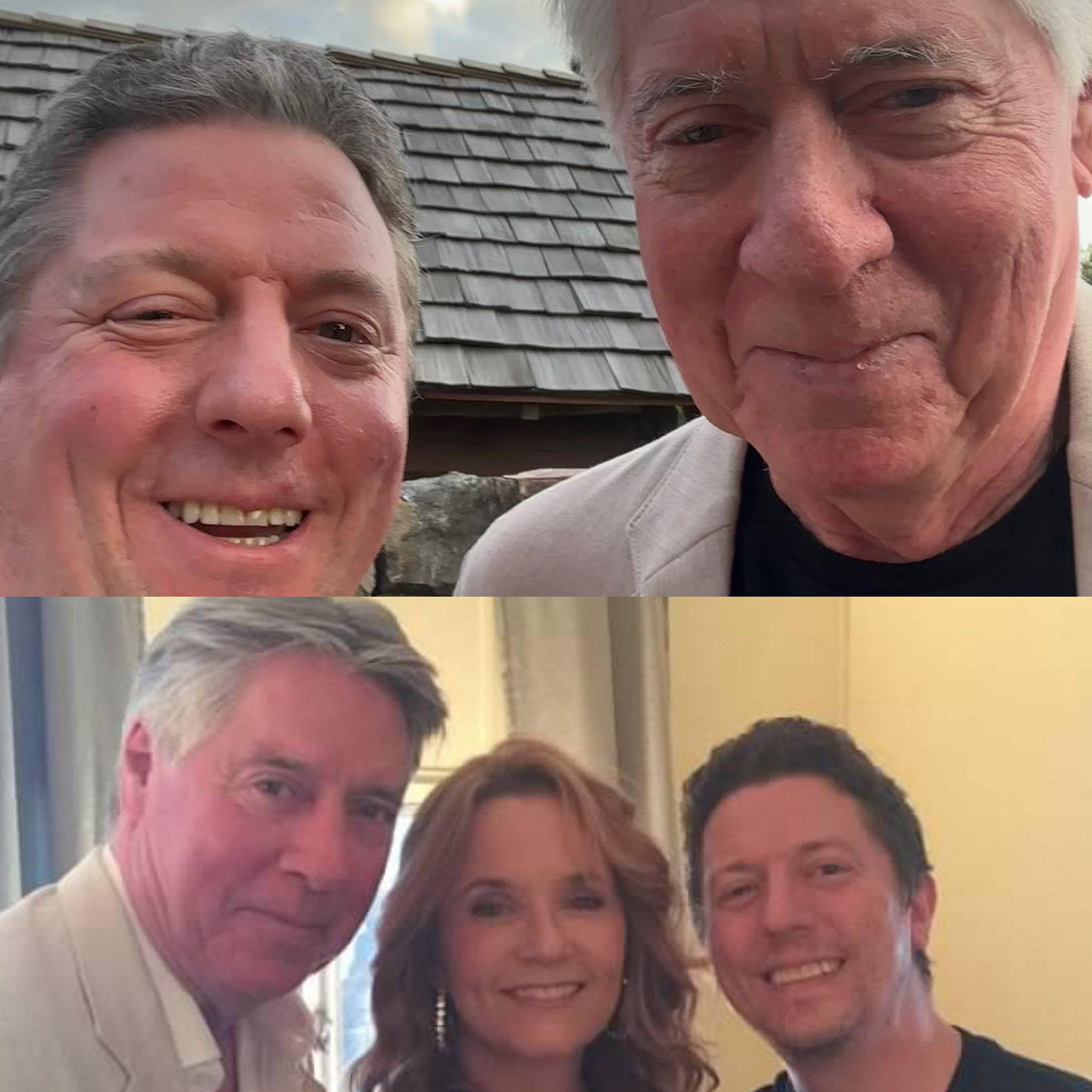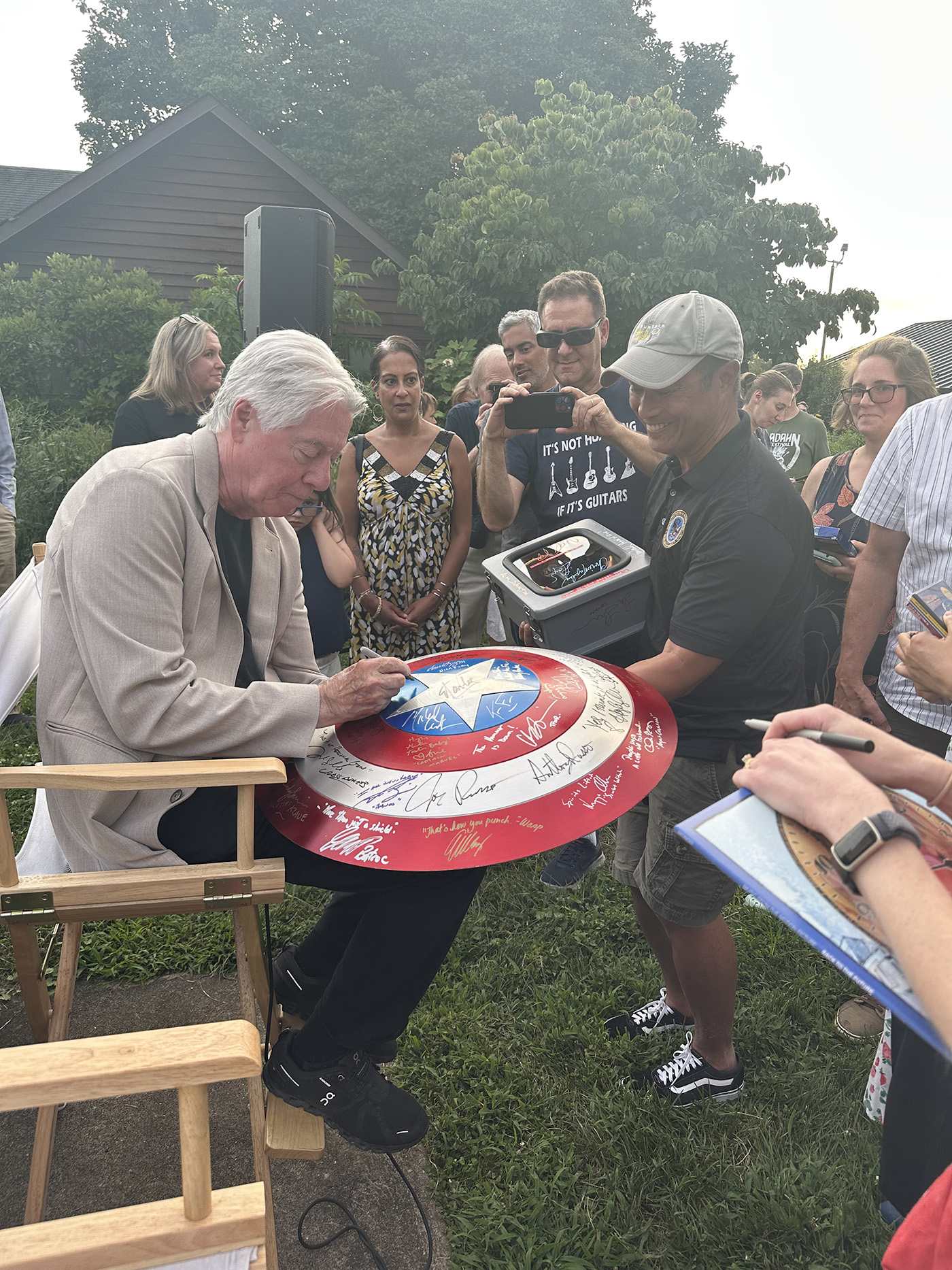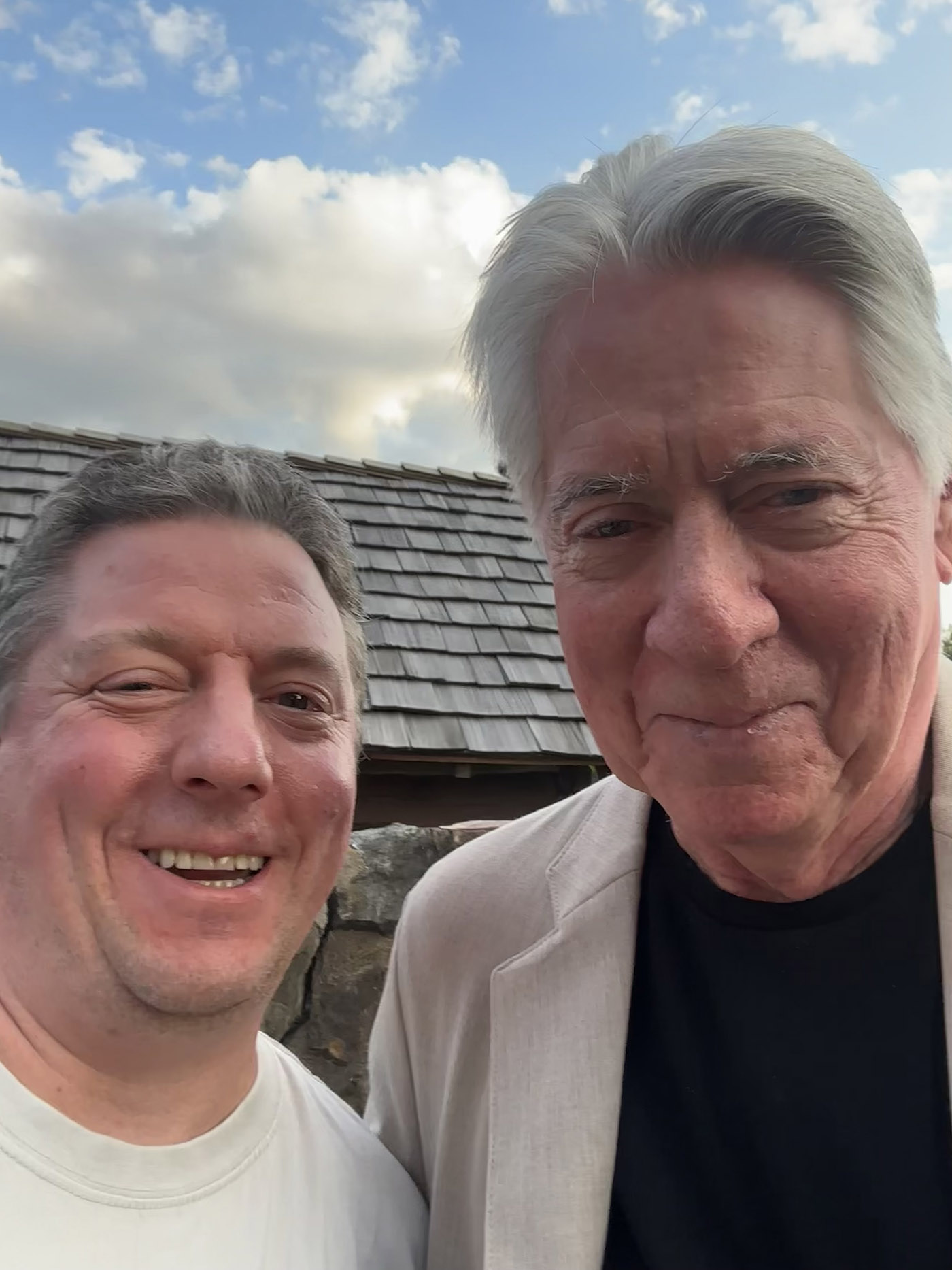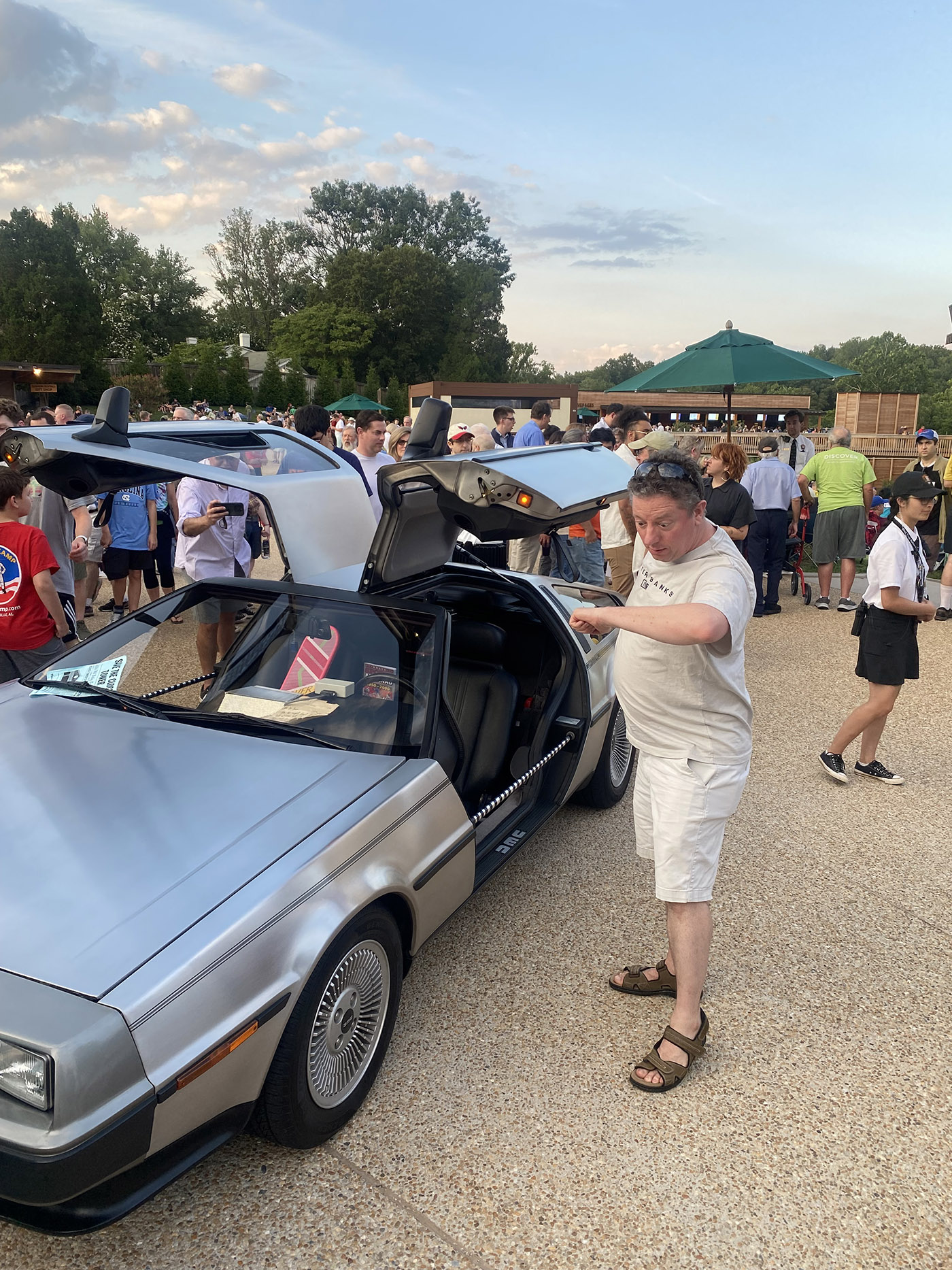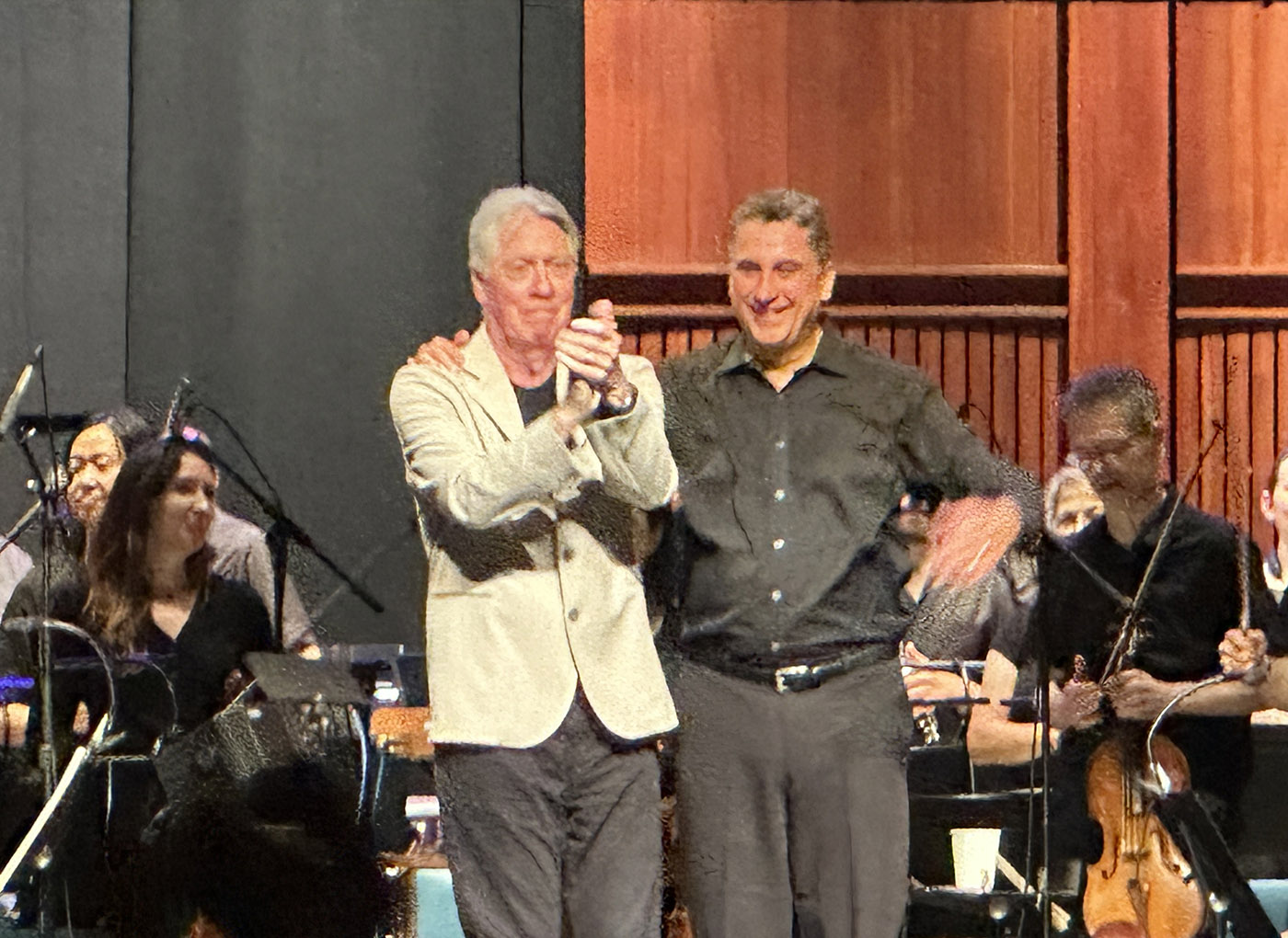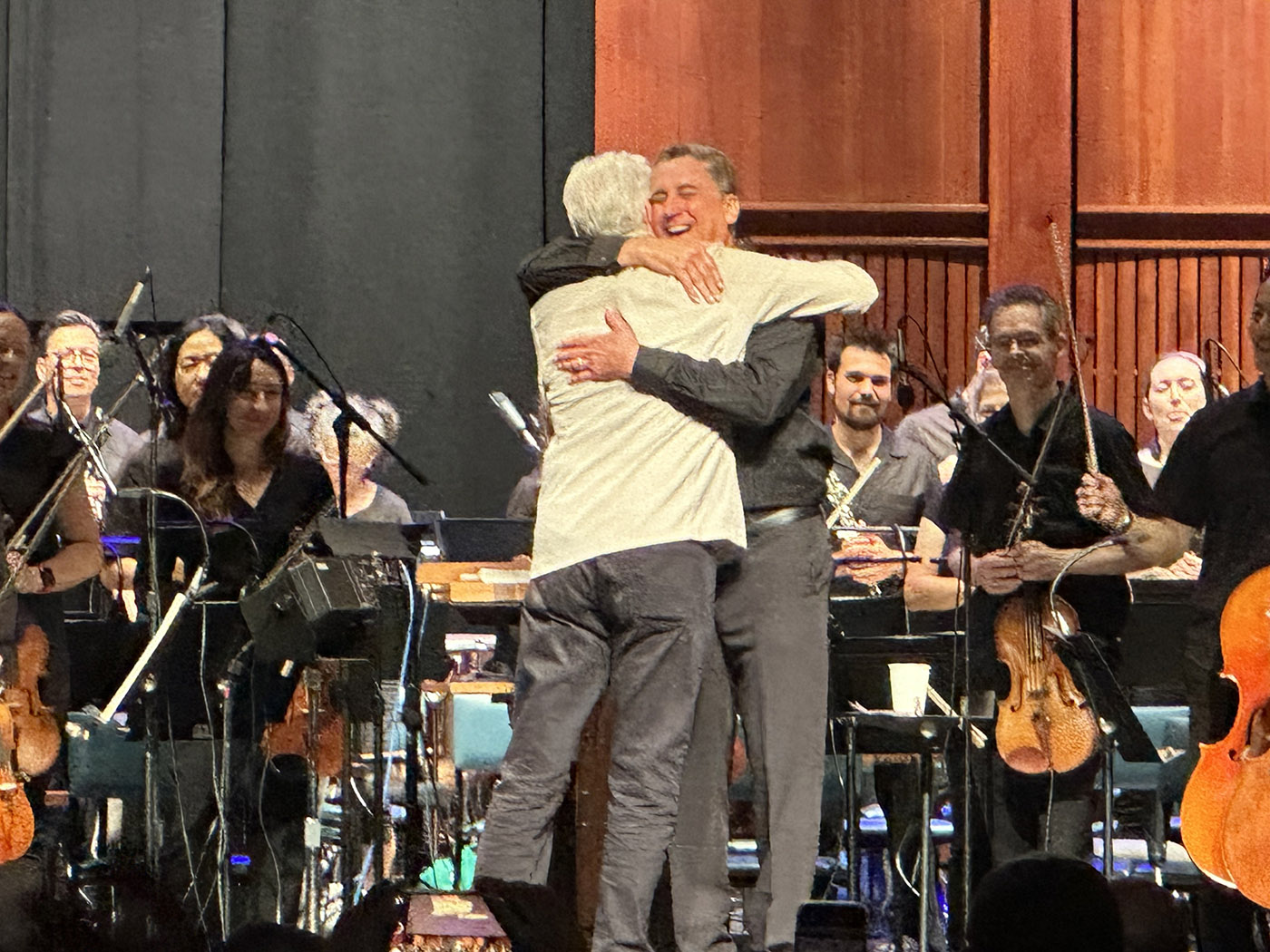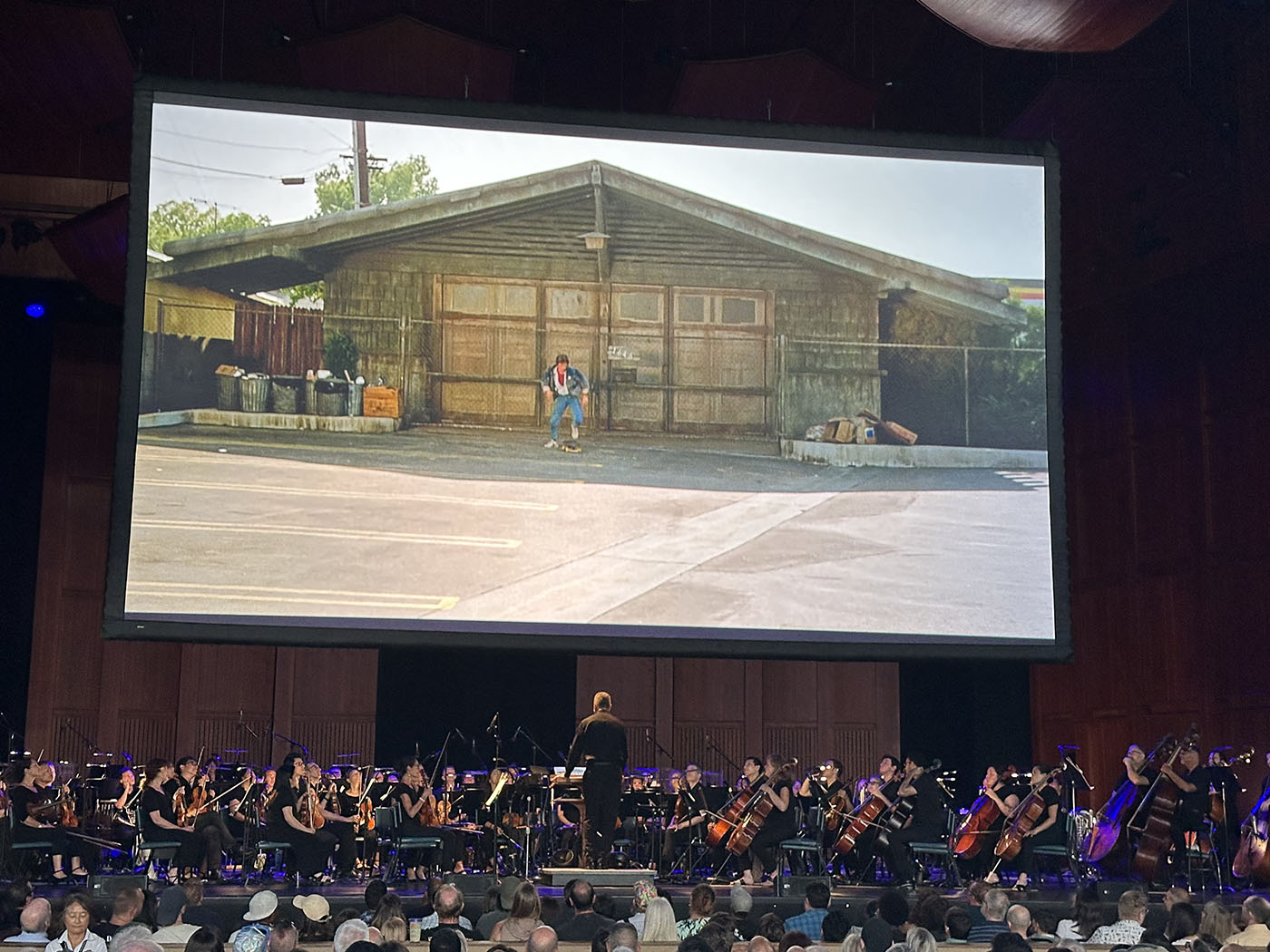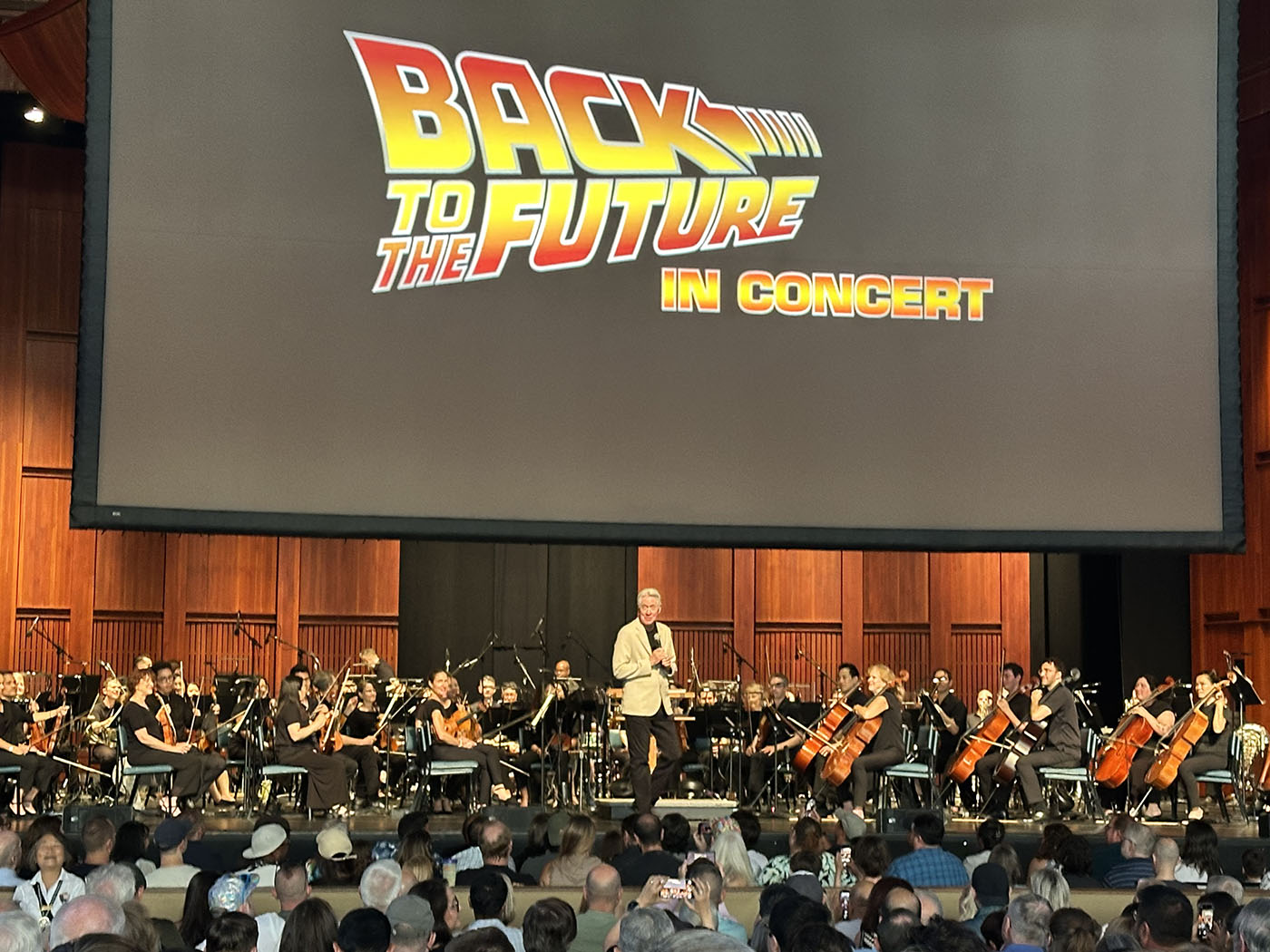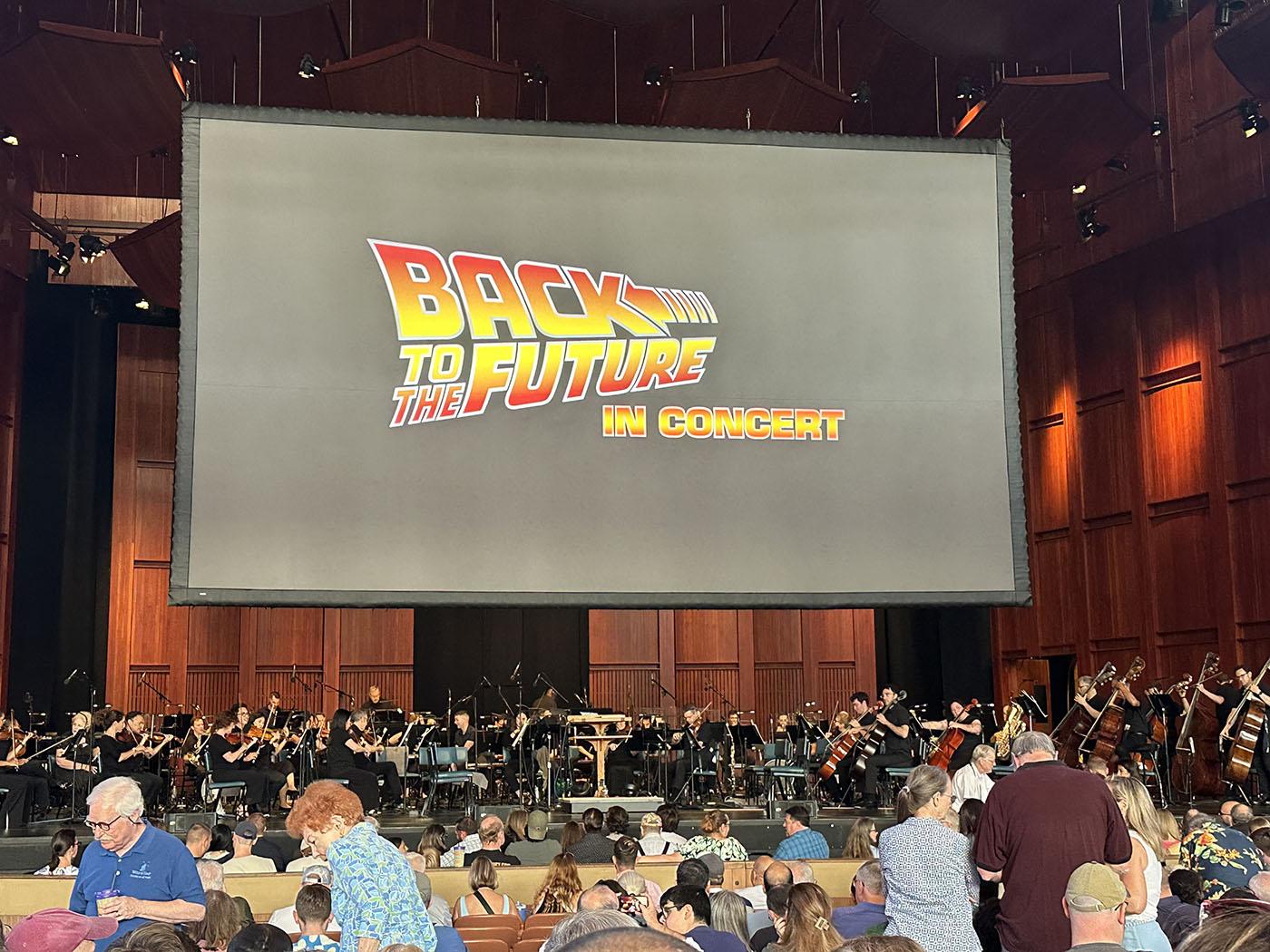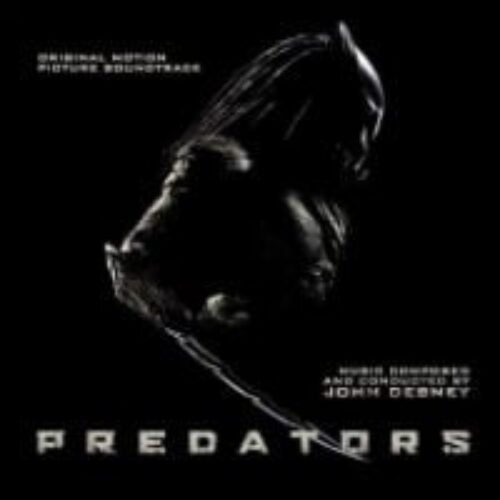Back to the Future composer Alan Silvestri joins NSO conductor Emil de Cou for 40th anniversary movie-concert
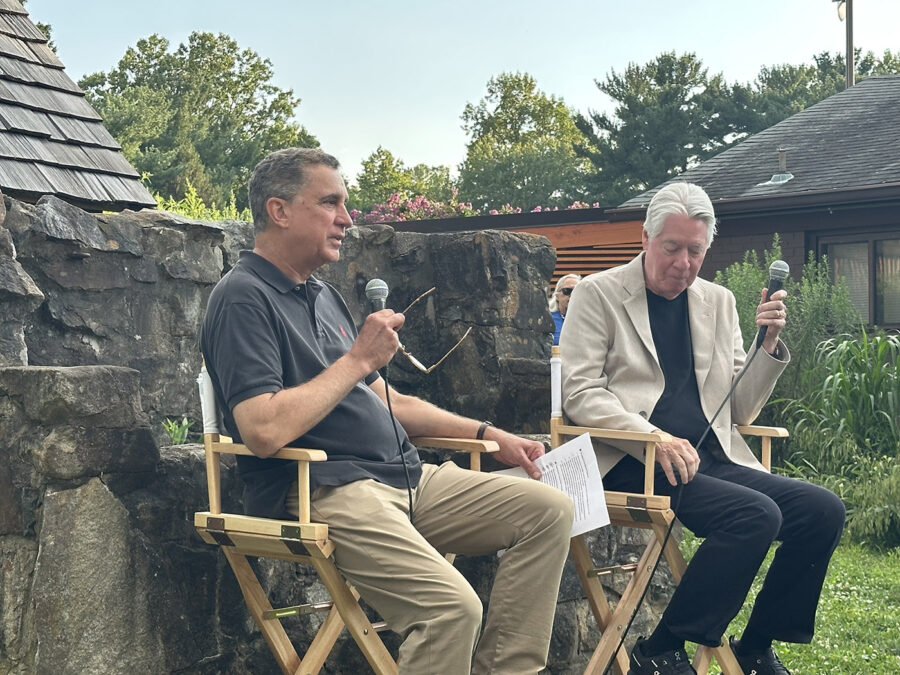
Back to the Future hit theaters 40 years ago this summer, and if audience reaction to the live screening backed by the National Symphony Orchestra in Vienna, Virginia, last weekend is any indication, that fandom is as enthusiastic today as they were four decades ago. There were even two DeLoreans on hand for photos (as long as you abided by the staff’s admonition to not touch the cars).
Composer Alan Silvestri was all of 35 when he wrote that iconic, sweeping theme for Marty McFly (Michael J. Fox) and Dr. Emmett Brown (Christopher Lloyd). Silvestri flew in from California for the Wolf Trap event, joining NSO maestro Emil de Cou on the Wolf Trap’s Farmhouse Lawn for a pre-event chat about that exciting onscreen trip from 1985 to 1955 inside Doc’s DeLorean. (Silvestri and de Cou hosted a similar chat with actress Lea Thompson at Wolf Trap for the film’s 30th anniversary in 2015.)
The problems associated with making Back to the Future were legion, notably swapping out original leading man Eric Stoltz for Fox several weeks into production. The script by director Robert Zemeckis and cowriter/producer Bob Gale (colloquially known as “the Bobs”) was rejected all over town before Steven Spielberg came aboard as executive producer.
“Like any other movie, we were fighting for our lives,” Silvestri told the excited audience on the lawn. “No one expects a success like this. And here we are 40 years later.”
Silvestri’s early music career included work on CHiPS and T.J. Hooker. In 1984 he composed his first score for Robert Zemeckis, Romancing the Stone, followed the next year by Back to the Future for the same director. Silvestri shared that he and Zemeckis are about to embark on their 24th film collaboration—an impressive streak that includes 1994’s Best Picture, Forrest Gump.
Ever-cheerful and dressed to impress in a white blazer, Silvestri shared his composition process, which includes, in his words, watching the footage and waiting for “the film to say ‘hi.’” On Back to the Future, his journey with the blank music sheets even entailed “a nervous breakdown followed by epiphany,” which he said often go together in his particular line of work.
Silvestri had only six weeks to compose the BTTF score. Da Cou asked him how he came up with the now-familiar main theme, to which the composer replied that, because he is also a pilot, he came at the assignment from Zemeckis and Gale from a uniquely aerial perspective. (It was also Silvestri’s first time writing for a full orchestra.)
“It’s about heroism; it’s about buddies,” he said of the sci-fi/adventure/comedy, whose central relationships are both between Marty and Doc as well as Marty’s budding friendship with his own teenage father George (Crispin Glover) in 1955. “So we all felt the score could be a ‘plane’ where we could get size on the screen,” he said, adding that Zemeckis pushed him with the dictum “it’s gotta be big.”
Silvestri shared that when he played mock wargames with his chums as kids, he would often hear thumping music in his head—which may explain the martial tempo of his work not only in BTTF but in such other films as Predator.
“Now I just write [the music] down [and] make a living doing that,” he said.
Silvestri drew applause from the crowd when he said that his personal favorite film composer is John Williams, although the 75-year-old humbled himself by adding, “I’m no John Williams.” He praised the Star Wars and Indiana Jones wonder for being able to always “capture the essence” of a film in terms of musical themes. It’s an approach Silvestri has tried to apply himself: He pointed to the mournful musical cue underscoring the scene where Marty writes his letter to Doc ’55 warning him that Doc ’85 will be shot by terrorists.
“If I’m not crying in a scene where I expect the audience to, I’m not on course,” Silvestri said, once again returning to the flight metaphor.
De Cou and Silvestria discussed how, when it came time to stage the 30th anniversary concert a decade ago, there was a scant 22 minutes of actual musical score—a problem not only for a film running one hour and 56 minutes but also for the musicians of the NSO who might be twiddling their thumbs in between cues (while their accountants cheer either way).
“We can’t have the National Symphony up there all night to play 22 minutes of music,” Silvestri said.
Both for the 30th anniversary concerts in 2015 as well as for the Back to the Future stage musical, Silvestri said he had dined with the Bobs and received their blessing to add more music. This includes for the opening tracking shot of all Doc Brown’s clocks, which was silent in the film but for their tickings. For the orchestral performances, the ensemble plays a newly inserted cue there, as they do when middle-aged Lorraine (Lea Thompson) explains to their children how she and George fell in love 30 years earlier at the Enchantment Under the Sea Dance. Silvestri said he believes the scene plays better with the newer music he wrote, and one of its motifs echoes Doc and Clara’s (Mary Steenburgen) love theme from Back to the Future Part III—an Easter egg for music geeks and an echo of the ecstasy of budding love.
Silvestri said that Universal boss Sid Sheinberg popped up out of his seat at the first studio screening, and Silvestri said he could “see green dollar signs” in the studio boss’s eyes. Indeed Back to the Future would gross nearly a half-billion dollars and spawn two sequels, a cartoon show, amusement park rides, the aforementioned stage musical and, thanks to its legions of fans, memories and repeat viewings.
During the Q&A, a young girl at the front of the audience said she had seen the film 71 times, which jazzed Silvestri so much he asked to take a photo with her. Another couple shared that their “question” was really to tell Silvestri that their first date, 40 years ago to the day, was dinner and Back to the Future, which they were recreating at the Wolf Trap. Silvestri was kind enough to take a photo with the couple following the lecture, as he also was in signing BTTF and other memorabilia from fans who approached him. (When I showed Silvestri my photo of meeting him for our interview 10 years ago at Wolf Trap, he insisted we take a new photo together.)
Thirty minutes later, with de Cou and the orchestra at center stage and the screen hanging above them, Silvestri appeared to thank the Wolf Trap audience for coming. Still boasting that wide grin and never missing a beat, Silvestri asked if the crowd was ready for “a journey through space and time.” He then gleefully engaged in an audience call-and-response of some of the film’s biggest lines, including Doc saying to Marty “If my calculations are correct, when this baby hits 88 miles per hour, you’re gonna see…” at which point he turned his mic to the audience so they could fill in “…some serious shit!” Silvestri then settled into his Wolf Trap seat close to the stage for the show.
It had already been a stellar evening, and the performance by the NSO hadn’t even started. De Cou and the orchestra did not disappoint, with the ensemble playing familiar themes from the film as well as those newer Silvestri-written cues. After the intermission they even opened up the second half with one of the Western themes from BTTF III.
At the conclusion, following a rousing standing ovation and a curtain call, de Cou invited Silvestri back to the stage. The silver-haired composer, still beaming, emerged from the wings and joined da Coa at center stage. The two musicians shook hands, hugged and collectively took in the Wolf Trap’s adulation. Silvestri applauded the audience in turn, acknowledging its rather important role in the evening of cheering, singing along and quoting favorite lines as the NSO played his music.
Forty years ago, if the 35-year-old 1985 version of the composer could see himself celebrating with 7,000 future fans in 2025, no doubt he would have observed, “Great Scott!”

